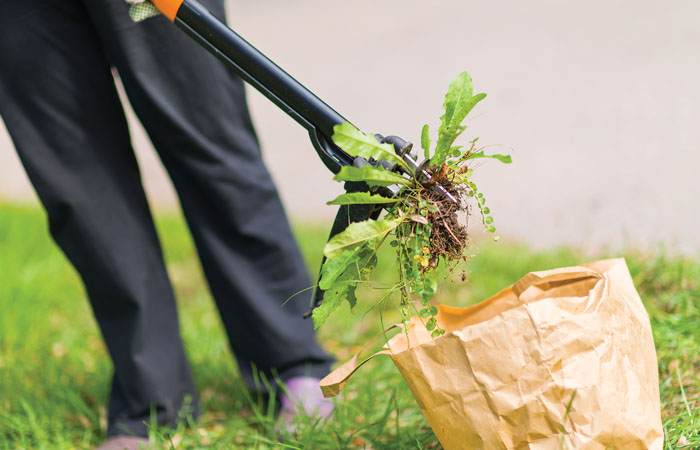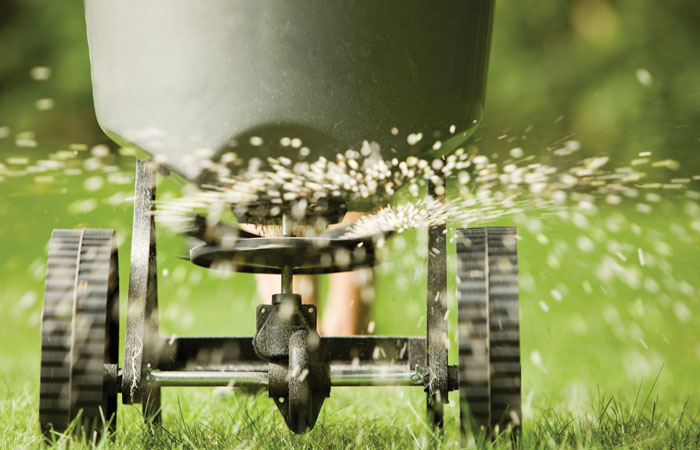Welcome back avid golfers, and I hope that you took advantage of the bits of good golfing weather between the deep freezes. We have arrived at that awkward part of the season when the warm season grasses are still mostly dormant and the weather is just starting to shift. But we are all ready for spring golf and, so, as we patiently wait for better weather, the questions that I hear most around the club shift a bit.
This month’s Ask the Superintendent question is “How can I be a good neighbor to the club if I live next to the golf course?” This is a big question and is as old as the first home built next to an active golf course. Mrs. Dobbs, my elementary school English teacher, might like to point out about now that it’s incorrect to say, “I live on the golf course.” It is correct to say, “I live next to the golf course.” It all depends on perspective.
That said, let’s take a look at the ins and outs of being a good neighbor to your club and what the club can do to enhance your dream home overlooking the back nine.
Opening the Course, Noise Complaints and Home Location
There will be times when the activity on the golf course will be in conflict with your normal activities around your home. This is never truer than early in the morning when the maintenance workers start preparing the course for the day and you are trying to sleep. The golf course maintenance staff will be several hours ahead of the posted first tee time, to make sure that the many things that must be done and verified before play can begin are completed within the club’s standards. This work begins at the maintenance barn and spreads quickly from the practice facilities, driving range and then onto the course, usually starting at the first hole. But then for improved productivity, greens or other features may be serviced in specific clusters that allow the work to done faster. For example, an operation may mow greens Nos. 1, 2, 17 then 18 as one mowing assignment because of the greens being located closer together rather than mowing in sequence. So, if you live on No. 17, you may think, “Why are they mowing so early? It’s the next to the last green.” Again, it all depends on perspective.

Please know that we are not trying to make unnecessary noise and that we are using the quietest equipment available, including low decibel blowers, etc. We even measure the noise of our equipment, including fans placed on greens to better understand the impact our operation has on homeowners. That said, it is not uncommon for us to start at 4:30 a.m., especially if an early shotgun start is required. We are operating a business that requires extreme amounts of maintenance, and this maintenance is likely one of the biggest reasons why you bought your home.
It is also one of the most popular complaints from homeowners to the club. “They were mowing before the sun came up!” Understanding the realities of the situation requires give and take, but the needs of the golf operation are the starting point of discussion. Early tee times are premium and mandate early start times for maintenance. If you have a complaint about the standard operating procedures of the club, reach out to club management or golf course superintendent in a professional manner and work together to understand the possibilities for accommodation.
After 37 years of talking with homeowners who live next to the golf course(s), the takeaway from this section that I feel is most important is that when you are looking to buy a home next to a course, make every effort to understand how your habits and activities align with maintenance and other activities of the club and pick a location that makes sense. This also applies to large-windowed homes on the slicing side of a short par 4.

Water Management, Trees and Leaves
The golf course maintenance staff will make every effort to water up to the established property line and not beyond. Note that water is expensive! Occasionally, a sprinkler may come out of adjustment and, while we inspect sprinklers regularly, trust me when I say we appreciate a note or an email if you see a water-related problem. Leaks or drainage issues are sometimes hard to spot, and if it is impacting your home, we want to fix the problem. It’s what we do best; managing the flow of water onto and through the property. What we ask in return is that you do the same.
Many homeowners never adjust their irrigation systems and, as such, as we come out of hot, dry weather patterns, often the runoff water from homeowners over watering creates problems on the course. Be a good neighbor and keep an eye on how your property distributes and drains water. Irrigation allows us (homeowners and course managers) to protect green assets from drought, but it is drainage that protects green assets from flooding and the creation of stagnant anaerobic conditions. Remember that the over watering of mature landscapes often creates the perfect breeding ground for mosquitos. Water is a critical and expensive resource. Let’s work together to use it wisely and share best management practices for the betterment of the community.
Trees and leaves often create ownership issues. I am an International Society of Arboriculture-certified arborist and have worked with dozens of homeowners’ associations, parks and golf courses over the years. For today’s purposes, we will stick to the basics. If the tree originates on your property, it’s your responsibility. Managing tree assets can be complex, but generally trees should be properly placed by maturity size, light and soil requirements, with proper and ongoing watering, fertilizing, pruning and pest management. Well-placed and managed trees are assets, not liabilities.
When trees become dead, damaged or diseased (the 3 Ds), we must make decisions as to the safety and impact on property values and usability or safety. Note that the roots of most mature trees extend 30 percent farther than their above-ground branches, so it’s possible that a cottonwood or willow tree may be clogging drains with their roots quite a distance from their trunks. Questions always arise, such as should a tree be pruned, root pruned or removed, who owns the tree, who will pay for the work, who will coordinate the work? When in doubt, talk it out.
We have had so many trees impacted by severe cold weather here in North Texas over the last few years, so much so that it’s causing a record number of removals or deep pruning. Many of these trees or clusters of trees start on the course property and extend into home sites or buffer areas that line the course. Be sure you work together to declare ownership and responsibility for tree-related situations.
Leaves are another matter. Wind moves leaves naturally, and we seldom question, is this our leaf? However, if we intentionally blow leaves from the course onto your property, that should never happen. If it does, let us know. Conversely, we expect that you or your landscaper will not blow leaves or debris from your home onto the course. The golden rule applies here: treat others as you would want to be treated.
HOAs, Club Management and You ‑ Cooperation is the KEY
I have eight different homeowner associations (HOAs) that touch our courses, and we have great relationships with them all. We work at being connected, solving problems, and since many of our members own homes in the developments, it works best when we all work together. We need each other in order to be successful, and that is our shared goal, the tie that binds us. There are times when we miscommunicate or drop the ball, or sometimes just new players come along and it takes some time to work through the daily issues, but we are all in it for the long term. Cooperation is key.
You the homeowner/member are the most important piece of this complex puzzle. Your voice and active participation in the standing covenants and policies keep things moving properly. Serve on committees and boards, get to know the stakeholders from the HOA and the club. Invest your time and talents in the neighborhood.
I spend a lot of my time talking to all of the stakeholders around our facility/community, and it helps that I know them and they know me. However, not every superintendent is as extraverted as I am, so getting to know your superintendent may take some effort. But it is a key to getting things done right and in a reasonable timeframe. We, as superintendents, are stretched at times, but we appreciate a kind request as opposed to an angry demand. I am sure you understand the difference.
Final Thoughts
Living in a home that overlooks a golf course is often a life or at least lifestyle achievement/milestone, and we all want your experience to be as perfect as possible. Take some time to evaluate how you can be a better neighbor and how your club can be a better neighbor, and work toward a win- win relationship with all community stakeholders.
Keep making golf, your club and neighborhood better by reading and supporting AVIDGOLFER magazine. Together we are improving the game of golf, one issue at a time.